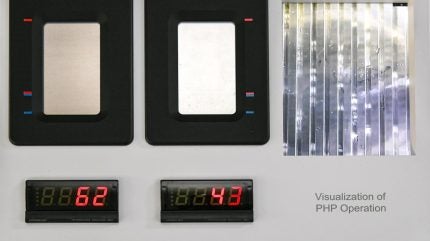
Hyundai Mobis, Hyundai Motor Group’s main component manufacturing affiliate, announced that it has developed a new battery cell cooling material that helps prevent electric vehicle (EV) batteries from overheating during ultra-fast charging.
Hyundai Mobis has stepped up its efforts to strengthen its battery safety solutions operations in recent months, after a devastating EV battery fire in South Korea in August – which spread to over 100 vehicles in an apartment car park. The company said it now “aims to secure world-class battery cooling technology and commercialize it to enhance its competitiveness in the future mobility market.”

Discover B2B Marketing That Performs
Combine business intelligence and editorial excellence to reach engaged professionals across 36 leading media platforms.
This new material, referred to as a ‘Pulsating Heat Pipe’ (PHP), is composed of aluminum alloy and refrigerant, which is placed between battery cells to lower the internal battery temperature that spikes during rapid charging.
Heat pipes are metal tube-shaped heat conductors that increase heat transfer efficiency between two objects. They are commonly used for cooling electronic devices such as computer central processing units (CPUs) and smartphones.
Hyundai Mobis’ PHPs use vibration to diffuse heat more efficiently through improved internal refrigerant circulation, resulting in minimal performance degradation due to gravity, even when applied to high-speed moving vehicles. The company claims its PHPs have more than ten times the heat transfer performance compared to standard aluminum heat pipes, by transferring heat away from overheated battery cells more rapidly.
Hyundai Mobis also claims its PHPs significantly reduce EV charging times by implementing a more stable thermal management system.

US Tariffs are shifting - will you react or anticipate?
Don’t let policy changes catch you off guard. Stay proactive with real-time data and expert analysis.
By GlobalDataThe company pointed out that EV battery packs are typically designed with integrated battery management systems (BMS), including cooling fans and various electronic devices that manage multiple battery modules (BMA). It added: “The BMA, which directly generates electrical energy, is a module-level component with multiple battery cells stacked, and optimizing the cooling structure to prevent battery cell overheating is critical. Hyundai Mobis successfully placed PHPs between each battery cell. They quickly transferred the heat generated in each cell to cooling blocks, thereby stably controlling the internal temperature at the module level.”




